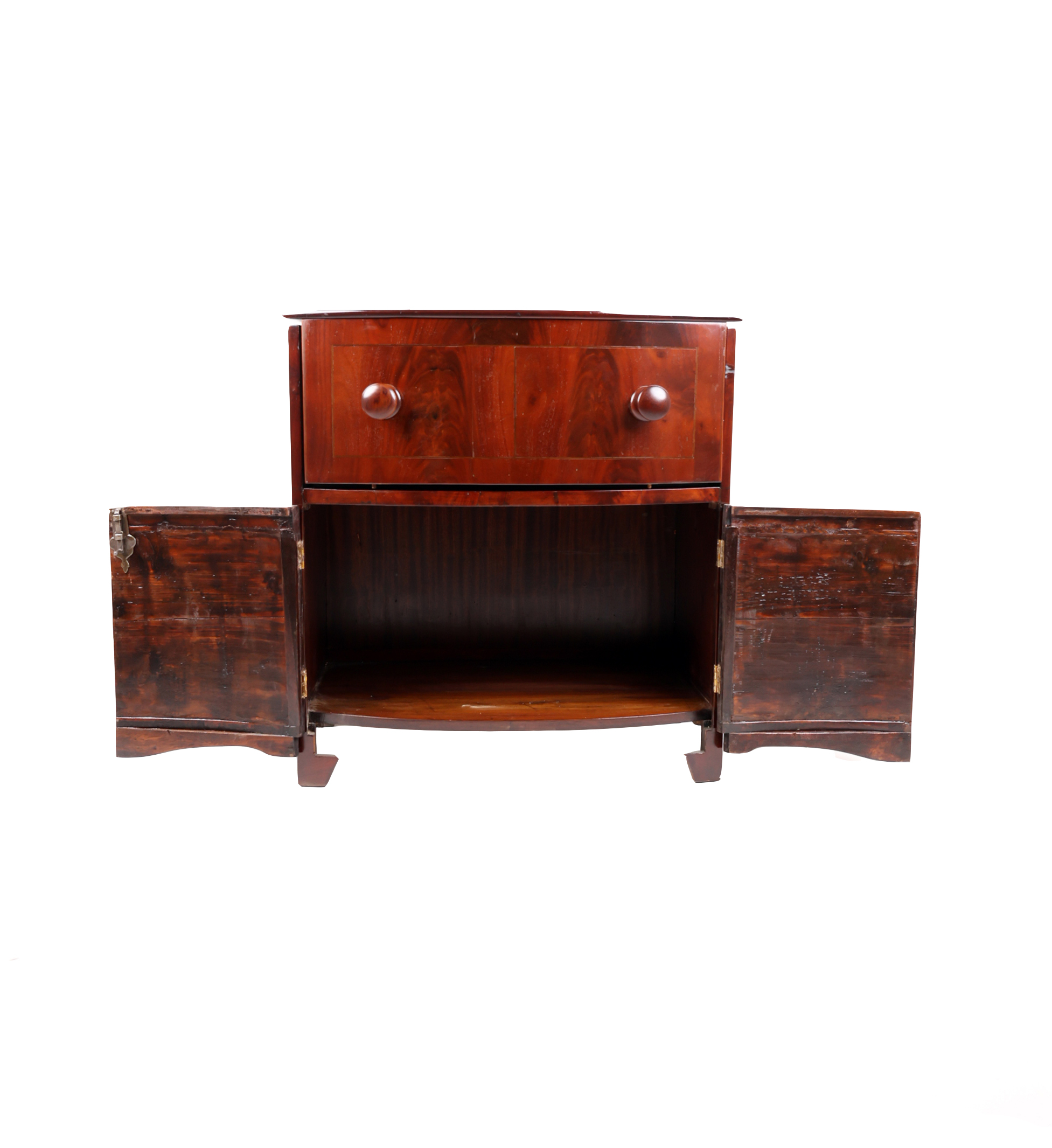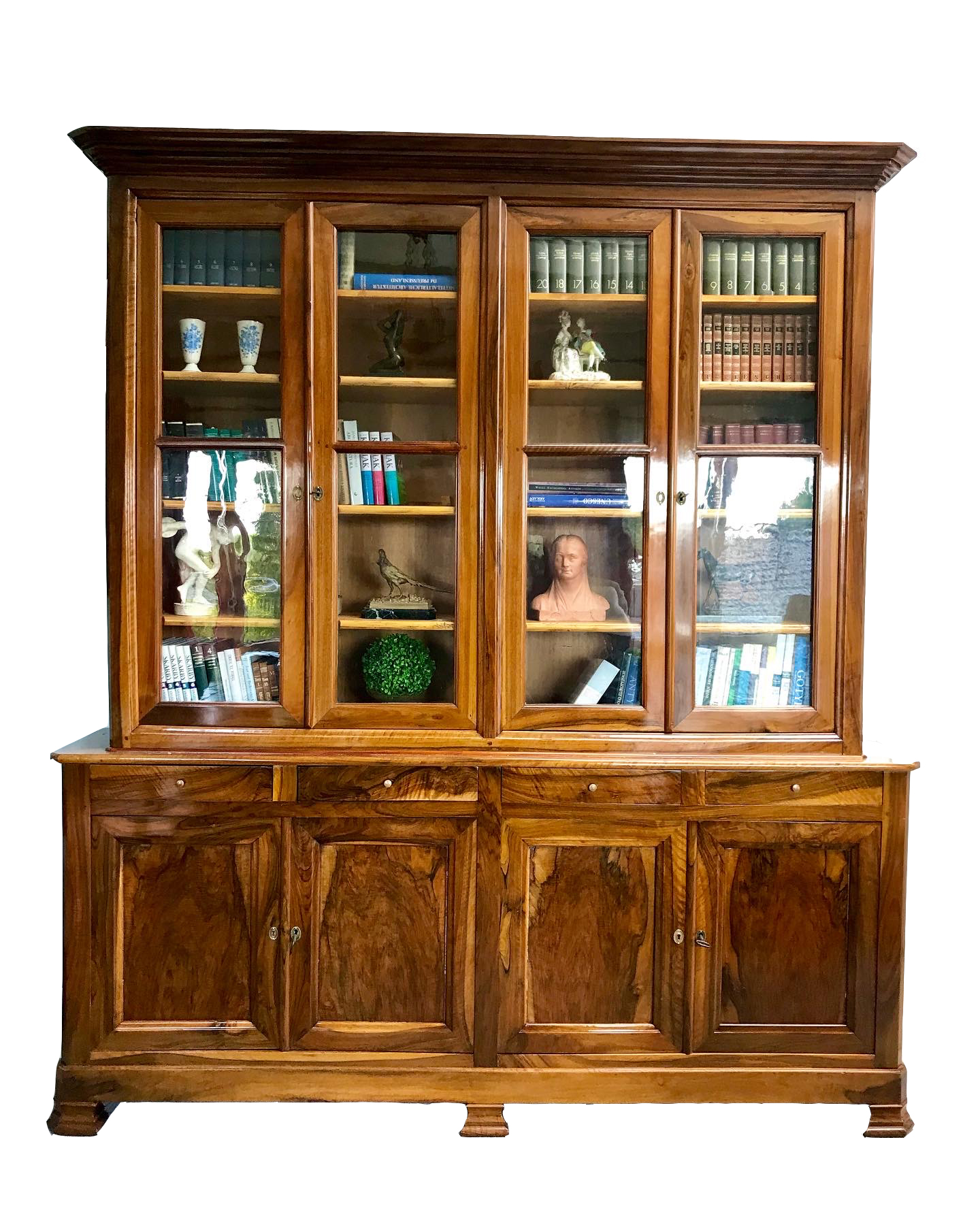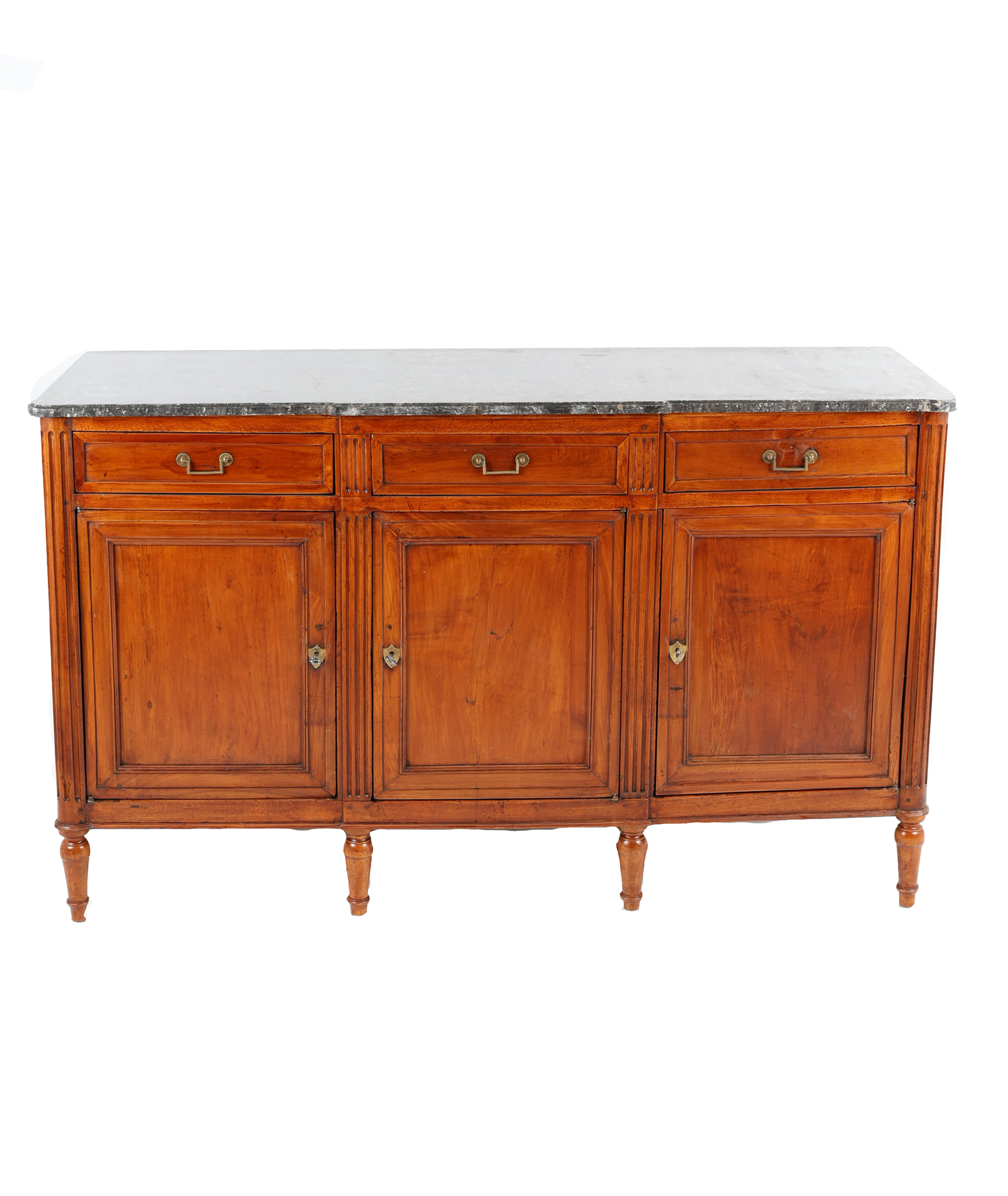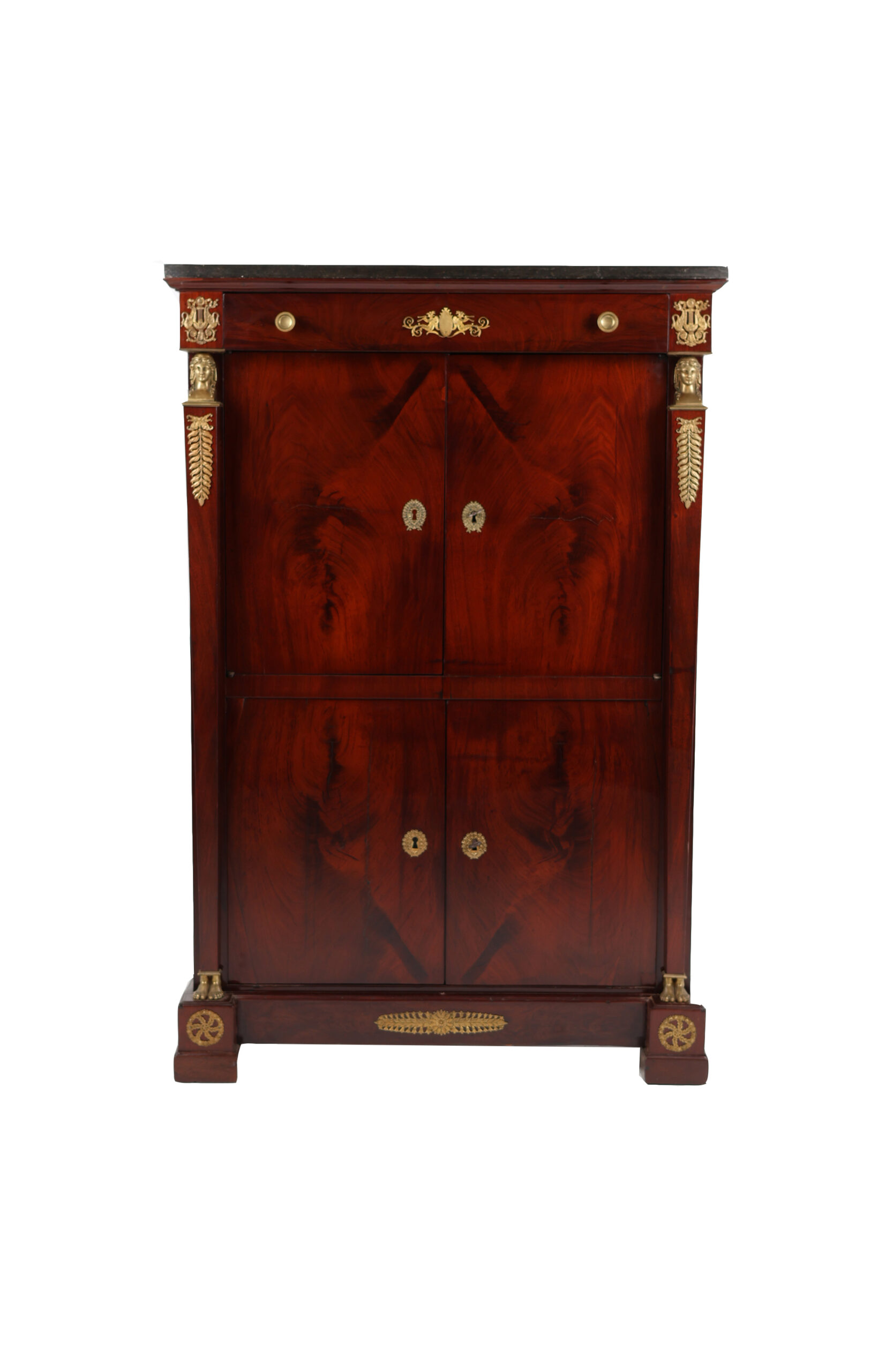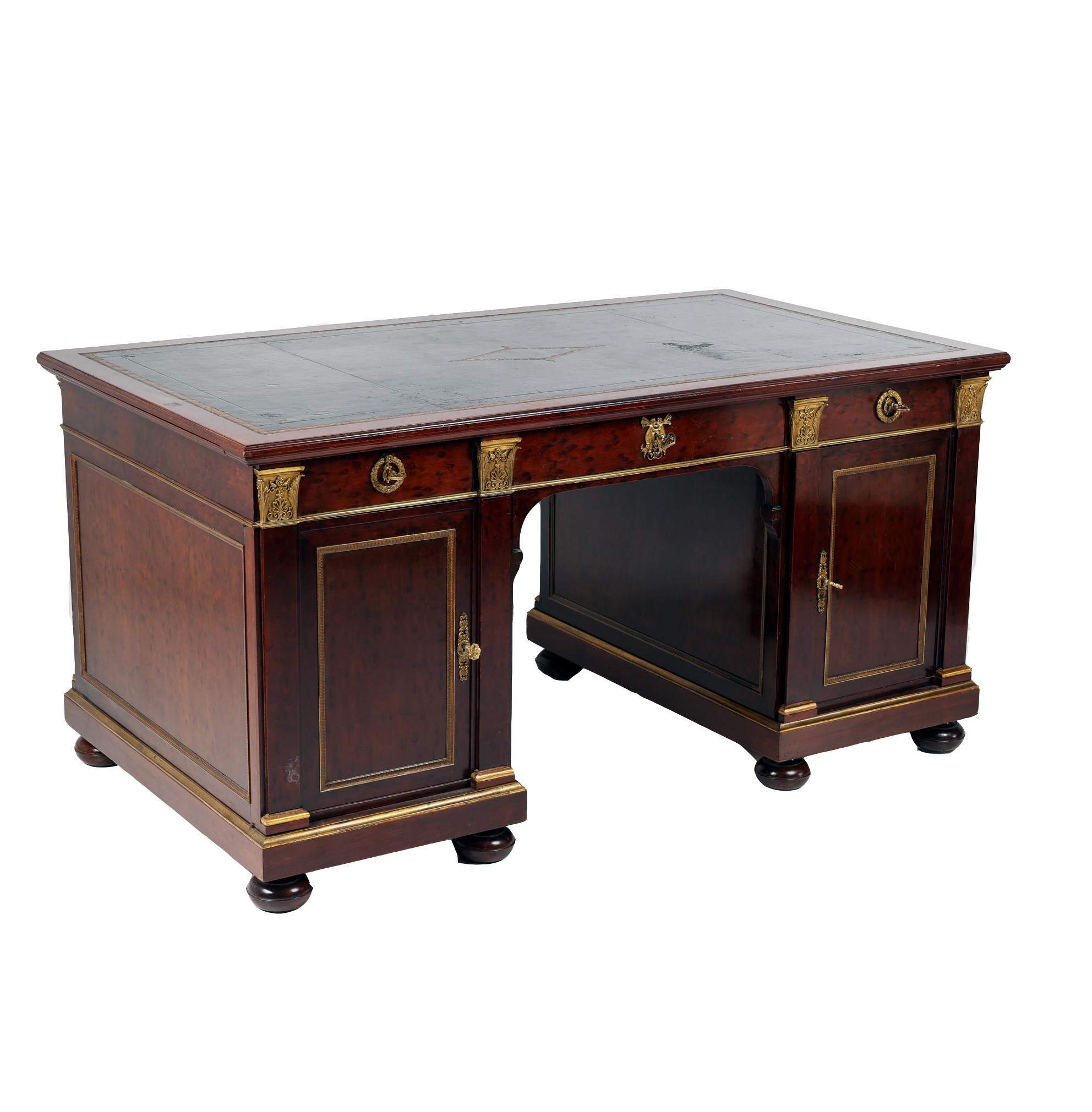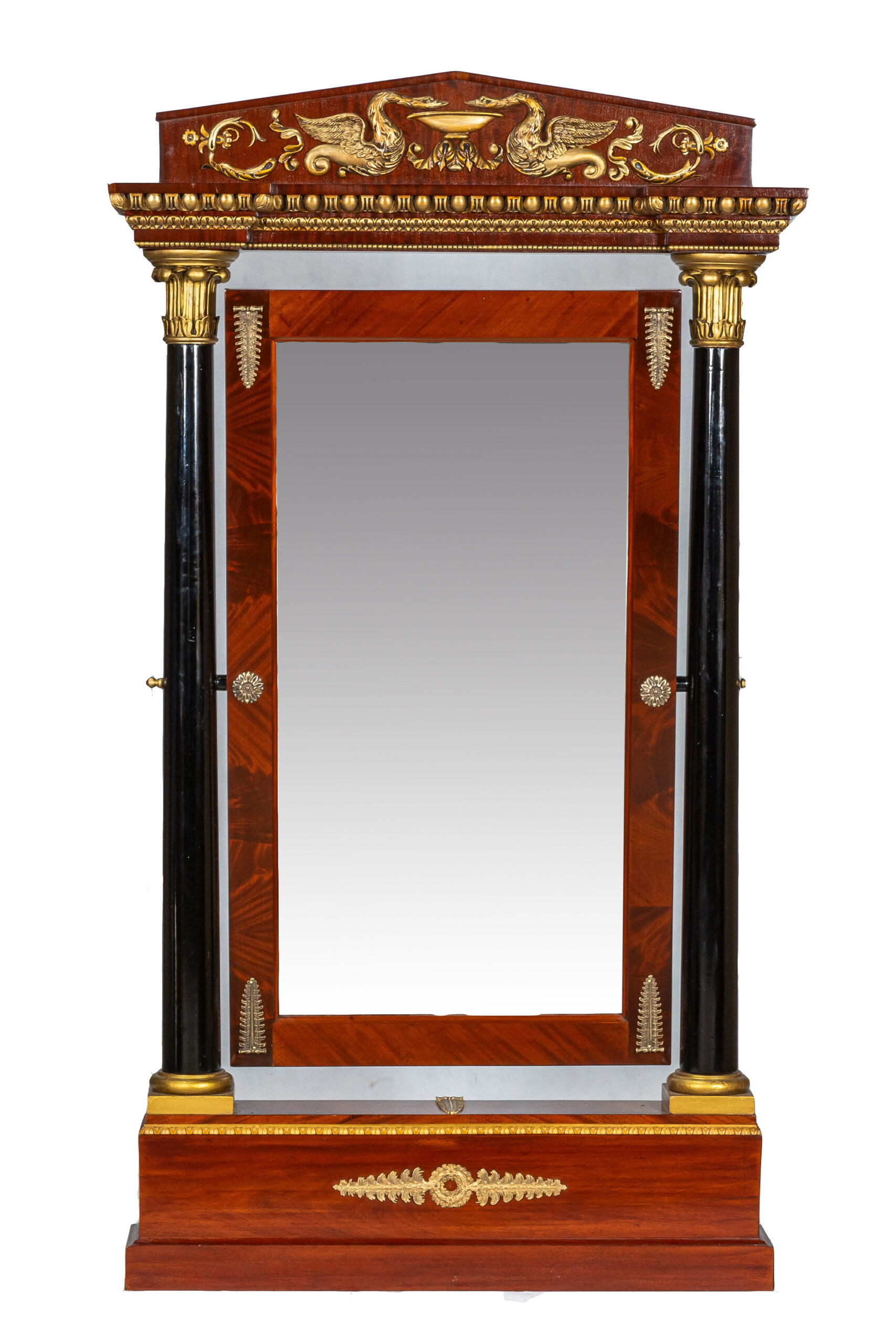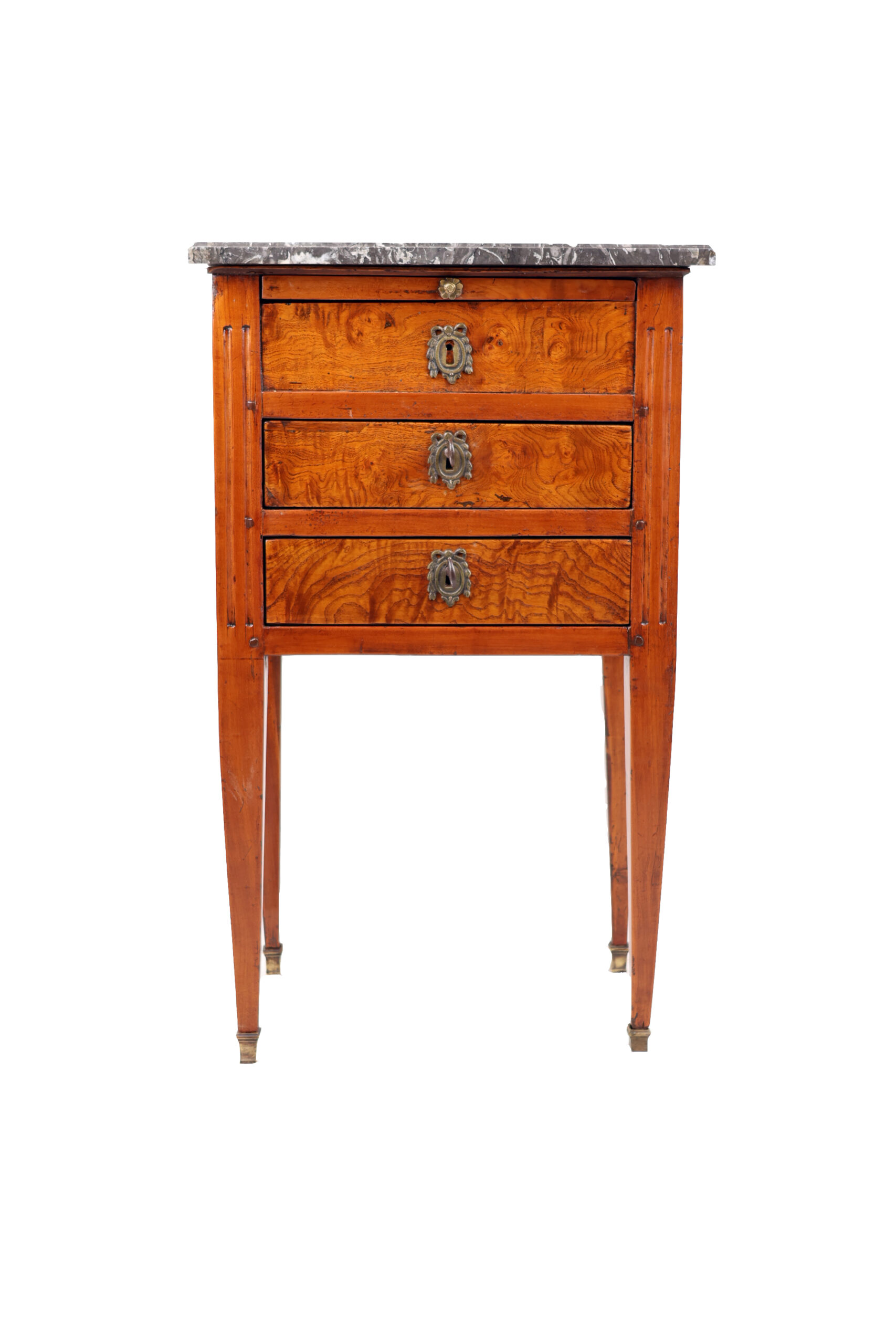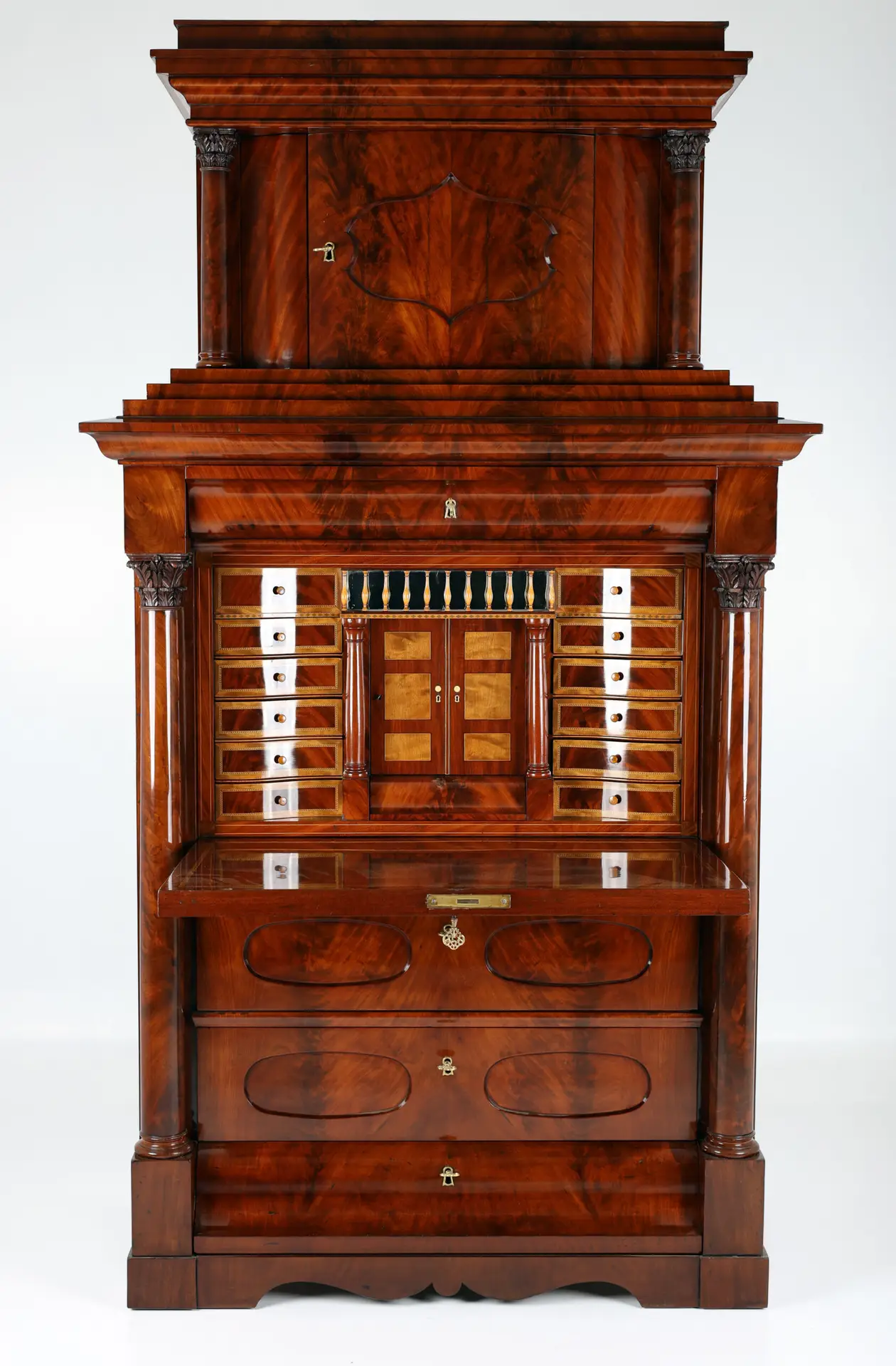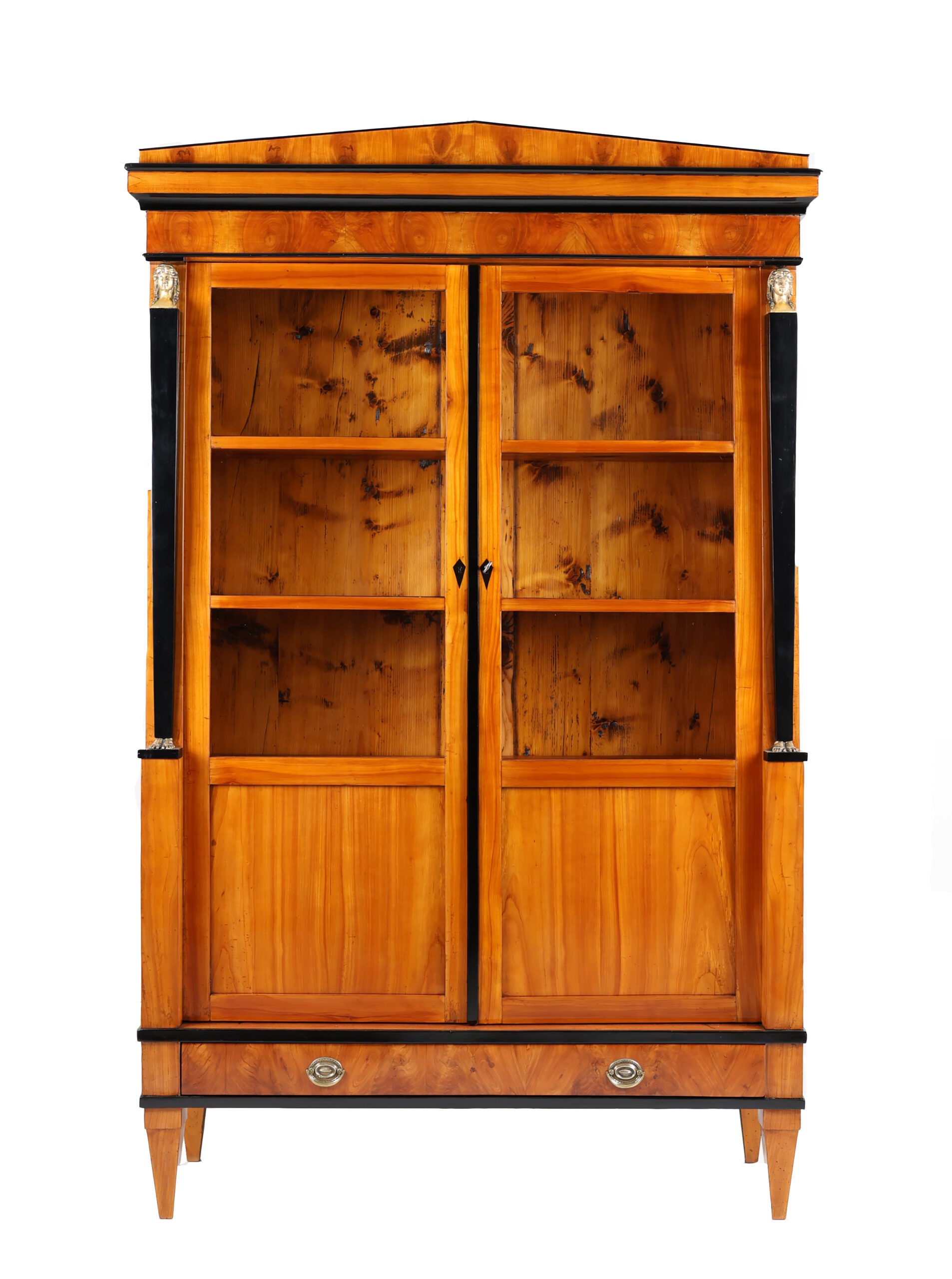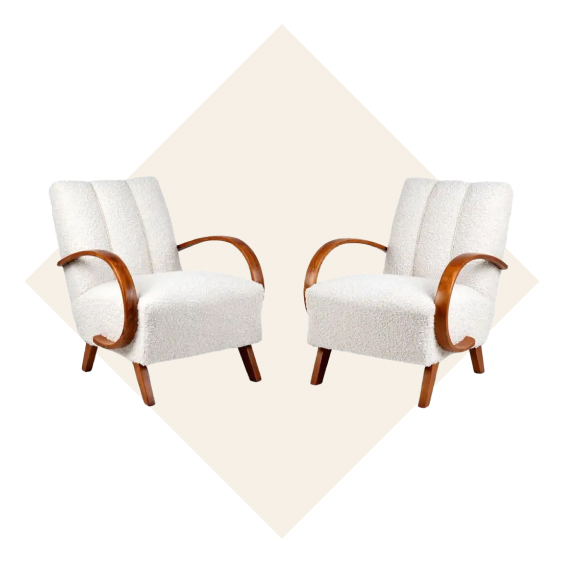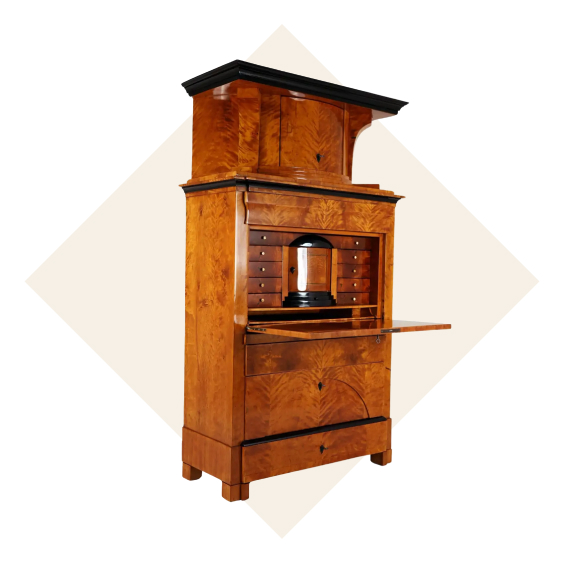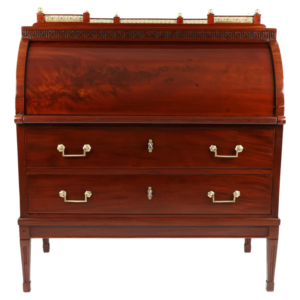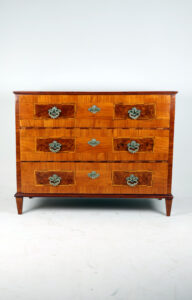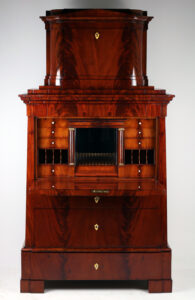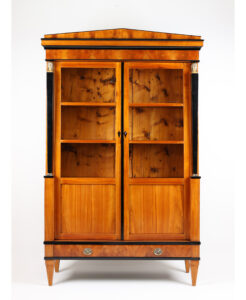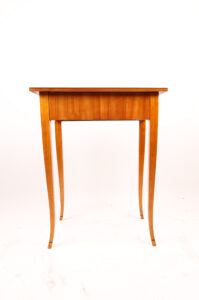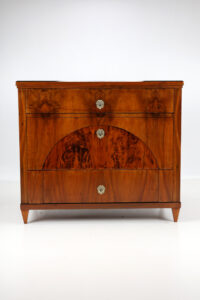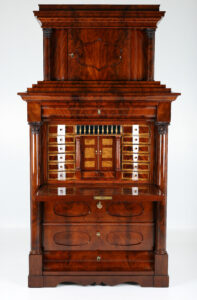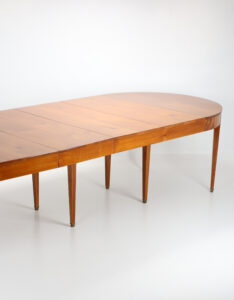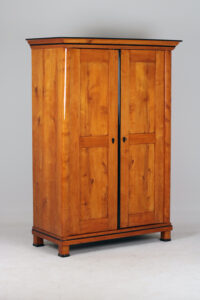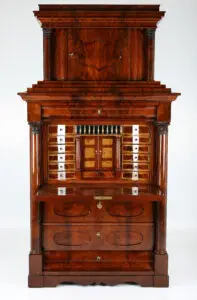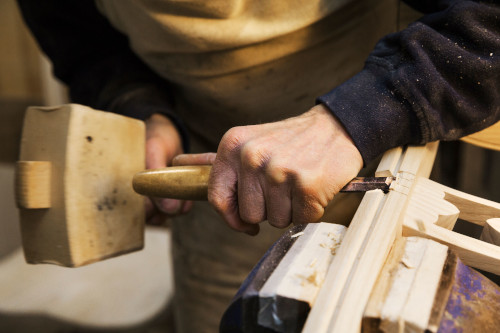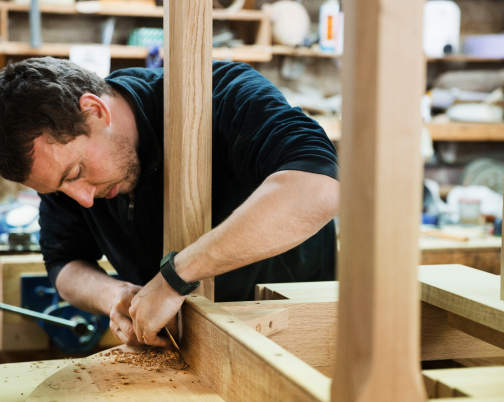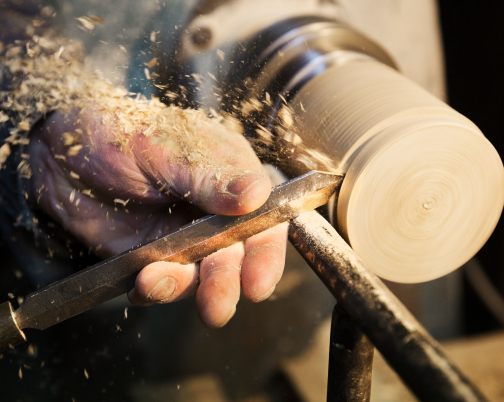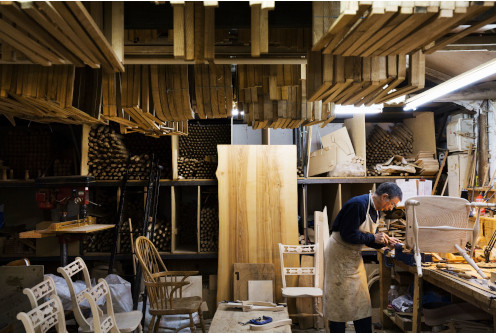At Antiqueria Breitling, we are proud to present one of the most beloved chapters in European design history: Biedermeier furniture. Originating between 1815 and 1848, during the years after the Napoleonic Wars, the Biedermeier period brought a new sense of simplicity, functionality, and refined craftsmanship to interiors across Germany and Austria. Where the Empire style of the early 19th century celebrated grandeur and opulence, the Biedermeier era focused on simple lines, practicality, and the beauty of natural woods such as walnut, fruitwood, and mahogany.
At Antiqueria Breitling, our curated collection includes Biedermeier dining tables, elegant secretaire desks, Biedermeier chests of drawers, nightstands, cabinets, and seating such as Biedermeier chairs and sofas. Every piece tells a story of early 19th-century European taste and reflects the values of the urban middle class, who sought furniture that was both beautiful and functional.
Biedermeier Style
The Biedermeier style can be recognized instantly by its clarity and sensibility. Cabinetmakers across Germany and Austria, particularly in Vienna, perfected the art of thin veneers over solid fruitwood or walnut bases. Designs often included drawers, hidden compartments, or extendable features such as folding dining tables.
At Antiqueria Breitling, you will find not only cabinets and commodes but also Biedermeier sofas, sideboards, and a wide selection of secretaire desks. These desks, also known as secretaries, are among the most iconic Biedermeier pieces, often featuring a flap that opens to reveal multiple small drawers and writing surfaces — true masterpieces of 19th-century furniture design.
Biedermeier Period (1815–1850)
The Biedermeier period coincided with the Romantic era, when the audience for the arts was expanding and more families invested in decorating their homes. Between 1815 and 1848, also called the 1815-1848 Biedermeier era, artisans in Central Europe (especially Viennese Biedermeier) created works that bridged neoclassical elegance and modern practicality.
It was during this time that secretaire desks, dining chairs, and chests of drawers became widely popular, not only as symbols of taste but as functional pieces for the home. Many examples survive today in excellent condition, often restored and offered as Biedermeier furniture for sale at galleries such as Antiqueria Breitling.
Walnut, Mahogany, and Veneer
The use of walnut and mahogany was central to the Biedermeier style. Cabinetmakers mastered the art of applying thin sheets of veneer, sometimes in striking patterns such as flame or burl, to create surfaces that glowed with depth and richness. Maple veneer and fruitwood were also popular, particularly in lighter Austrian Biedermeier designs.
Occasionally, details were ebonized to provide contrast, emphasizing the geometry of the design. This use of contrasting woods was a hallmark of typical Biedermeier aesthetics. At Antiqueria Breitling, we carefully restore these finishes with traditional techniques such as French polish or hand-applied shellac, ensuring each surface reflects its original brilliance.
German Biedermeier and Austrian Biedermeier
Our collection highlights both German Biedermeier and Austrian Biedermeier works. While German pieces often feature sturdier proportions and darker woods, made in Vienna furniture is renowned for its refinement, graceful curves, and use of light woods such as maple or cherry. Both traditions share the same Biedermeier sensibility: timeless elegance without unnecessary ornament.
Sofas, Dining Chairs, and More
Seating was an important part of the Biedermeier interior. The Biedermeier sofa, often upholstered with elegant fabrics, became a central element of the salon. Dining chairs followed the same restrained lines, using fruitwood or walnut frames with upholstered seats. These items were meant not only for display but for daily comfort, blending furniture and decorative purpose.
At Antiqueria Breitling, you may find a pair of Biedermeier chairs, an original Biedermeier sofa, or even rare Biedermeier writing desks, each carefully restored and ready to be part of a modern interior design.
Biedermeier Chest of Drawers and Secretaires
Perhaps the most iconic Biedermeier furniture used in homes were chests of drawers and secretaire desks. A Biedermeier chest of drawers typically features simple lines, strong symmetry, and richly grained walnut veneer or mahogany. Meanwhile, the secretaire combines practicality and charm, with hidden compartments and a fold-down drawer for writing.
We regularly showcase examples dated circa 1820 to 1850, highlighting the evolution of century Biedermeier furniture. Many are original Biedermeier pieces with authentic patina, while others have been expertly refinished to highlight their natural grain.
Vintage Biedermeier Furniture
What makes vintage Biedermeier furniture so enduring is its balance between utility and elegance. Instead of excessive ornamentation, these designs focused on fine veneer surfaces, often in honey-colored walnut, mahogany, or bird’s eye maple. Decorative details were subtle, sometimes using burled or ebonized contrasts, but always crafted with quality craftsmanship.
The Biedermeier style, sometimes called Karl Johan in Scandinavia, was not about impressing aristocrats, but about serving the needs of the urban middle class culture that grew during urbanization and industrialization in Central Europe. Its charm lies in its ability to simplify the ornate Empire furniture traditions into more practical and intimate forms.
Why Choose Antiqueria Breitling
At Antiqueria Breitling, we specialize in antique furniture, particularly Biedermeier designs. Our inventory includes dining tables, chests of drawers, secretaires, nightstands, and cabinets, all sourced with great care from Germany and Austria.
We believe in making authentic history accessible. That is why we offer Biedermeier furniture for sale at affordable prices, while ensuring every piece is treated with respect for its quality craftsmanship. Whether you are a collector, an interior designer, or someone looking to bring timeless elegance into your home, our gallery allows you to shop Biedermeier furniture with confidence.
Biedermeier in Today’s Interior Design
Although it emerged in the early 19th century, the Biedermeier style remains highly relevant for contemporary interior design. Its emphasis on streamline forms, functionality, and natural materials resonates with modern tastes — not unlike the later Bauhaus movement. Both styles sought to simplify design, focusing on sensibility and purpose.
Placing a Biedermeier dining table, a Biedermeier chest of drawers, or a secretaire in your home creates a bridge between 19th-century furniture traditions and today’s clean, minimalist aesthetics.
Collecting and Investing in Biedermeier Furniture
Collectors value Biedermeier antiques for their historical importance, timeless decorative style, and durability. Whether it’s a Biedermeier sofa, a pair of Biedermeier chairs, or a secretaire circa 1820, these items are furniture and decorative objects that continue to captivate.
At Antiqueria Breitling, we invite you to explore our collection — both in person and online — to discover Biedermeier furniture used in real homes two centuries ago, now carefully preserved for a new generation.



